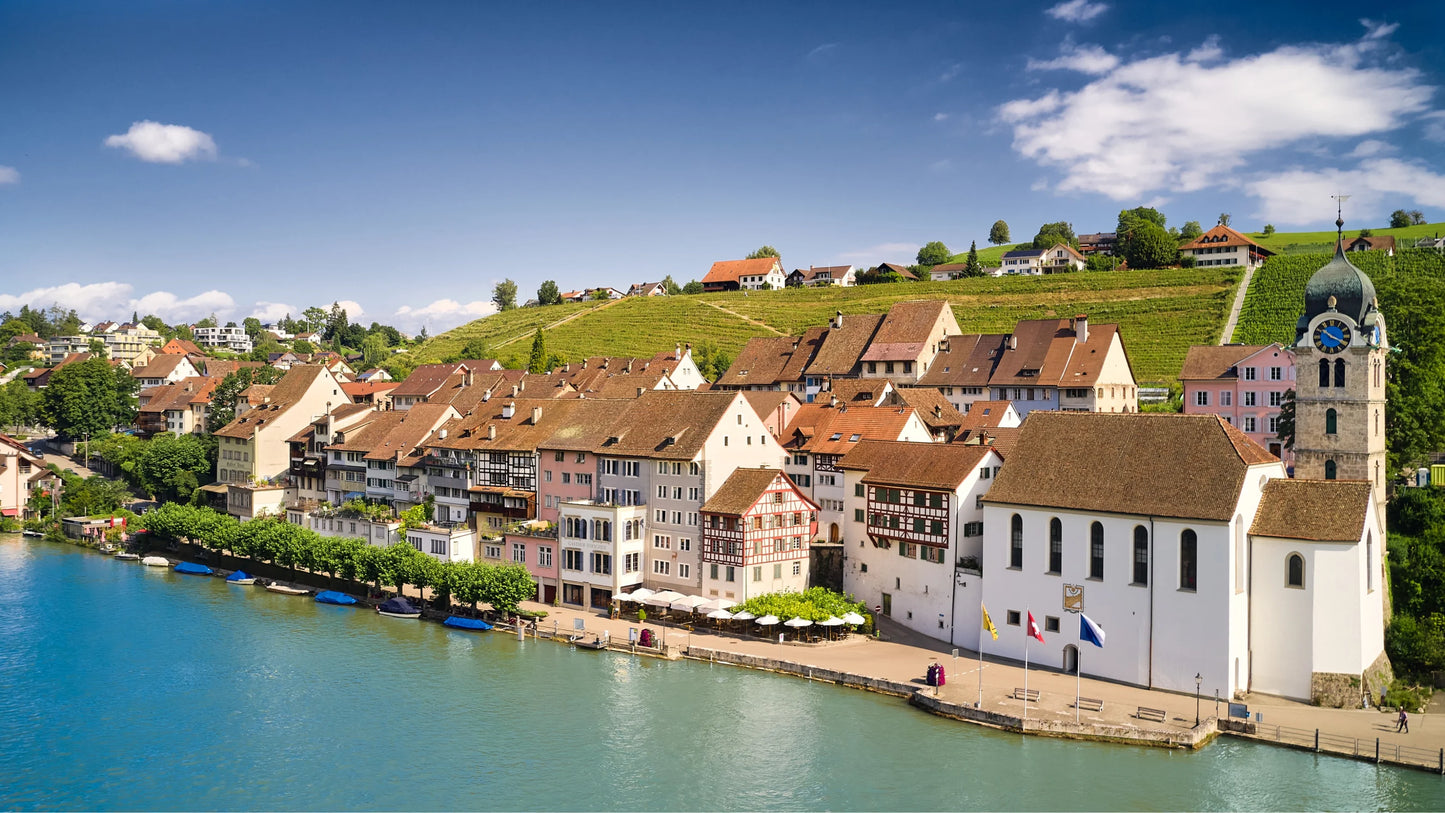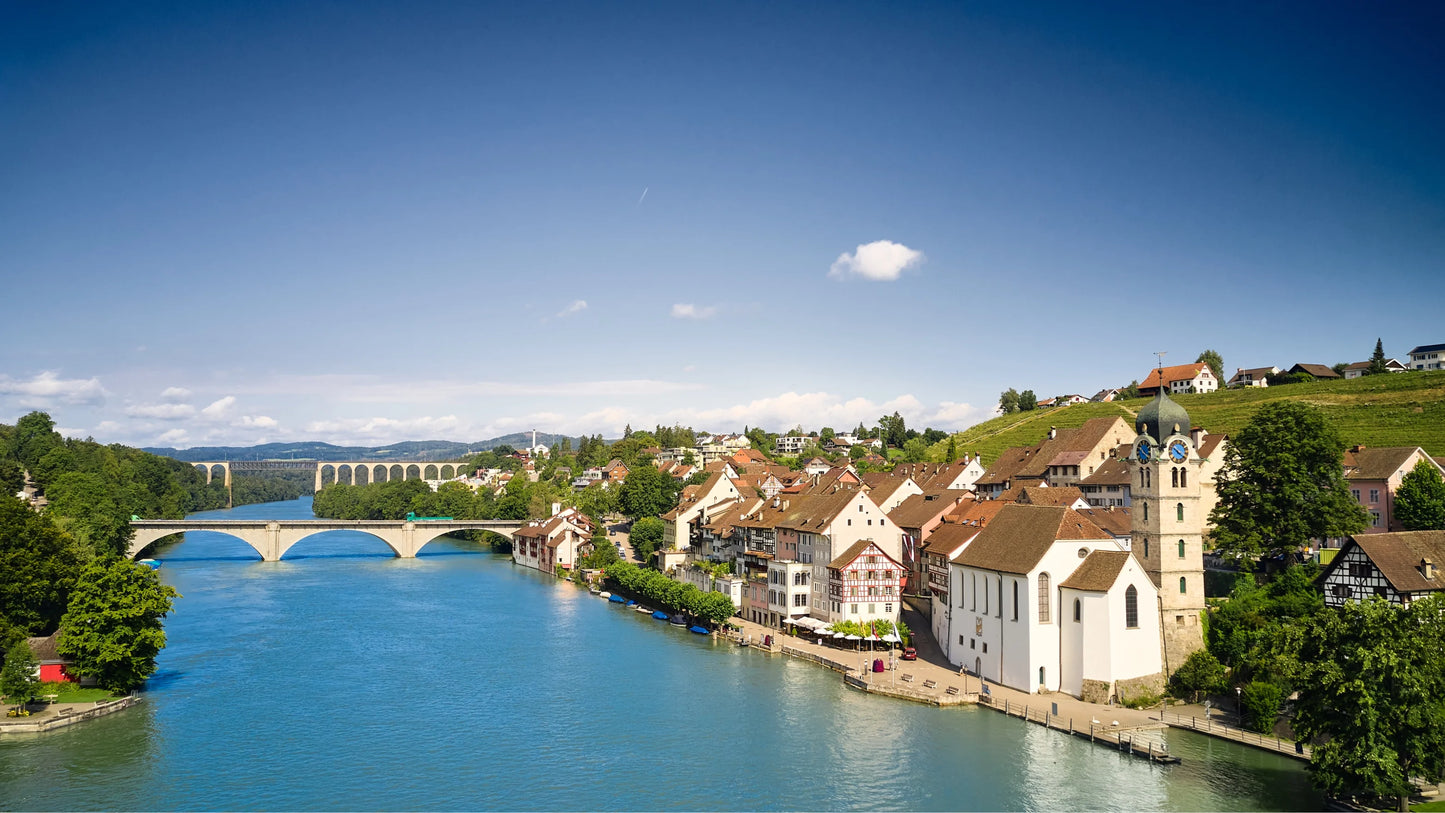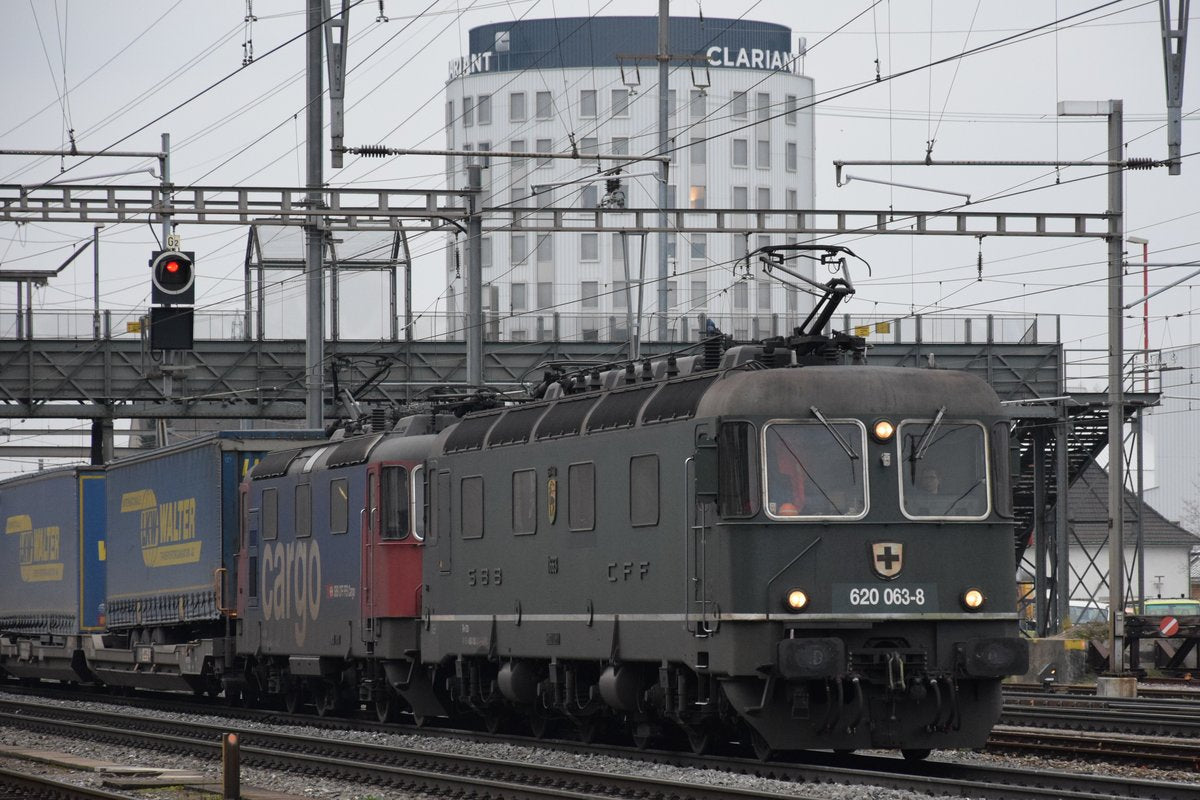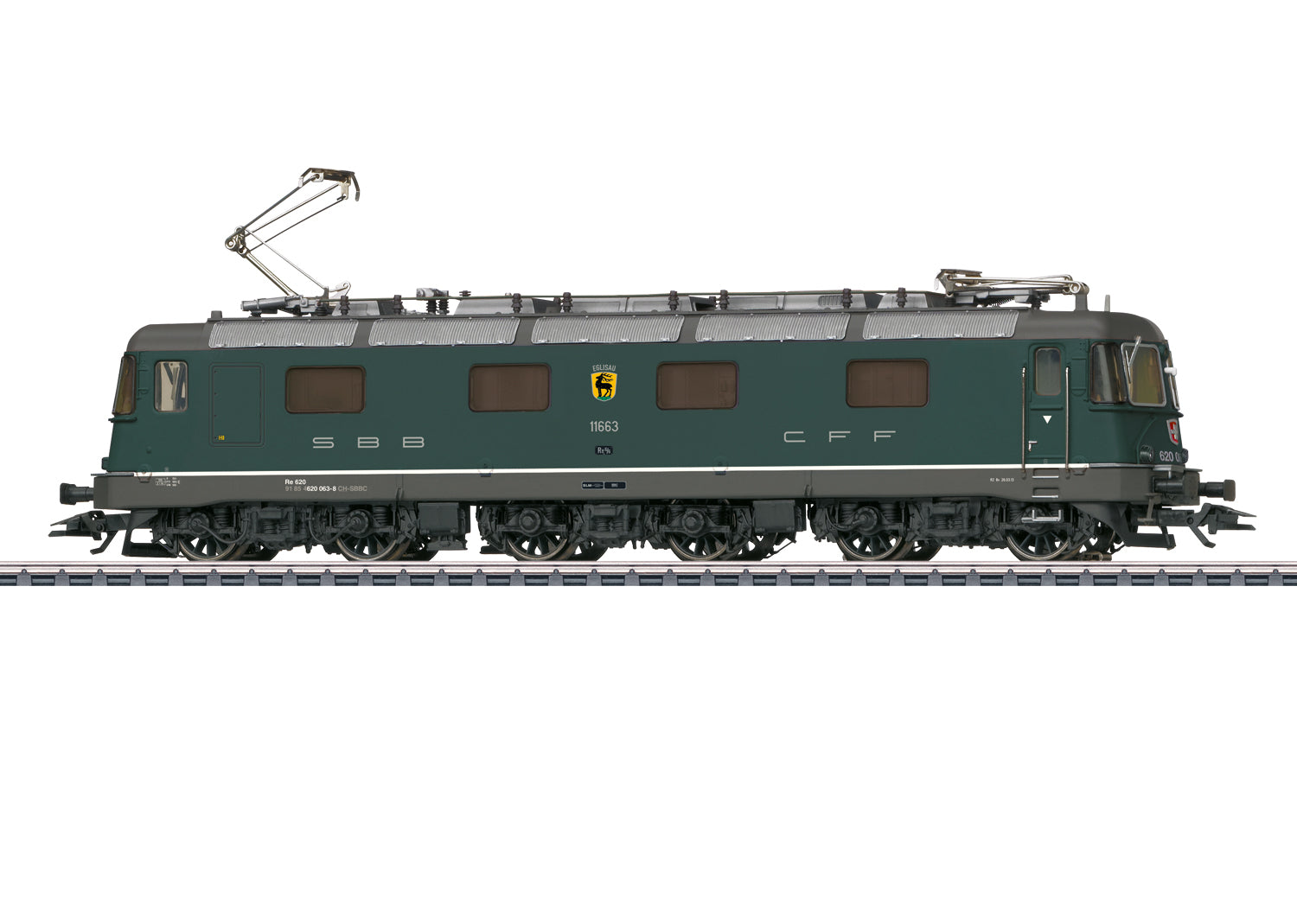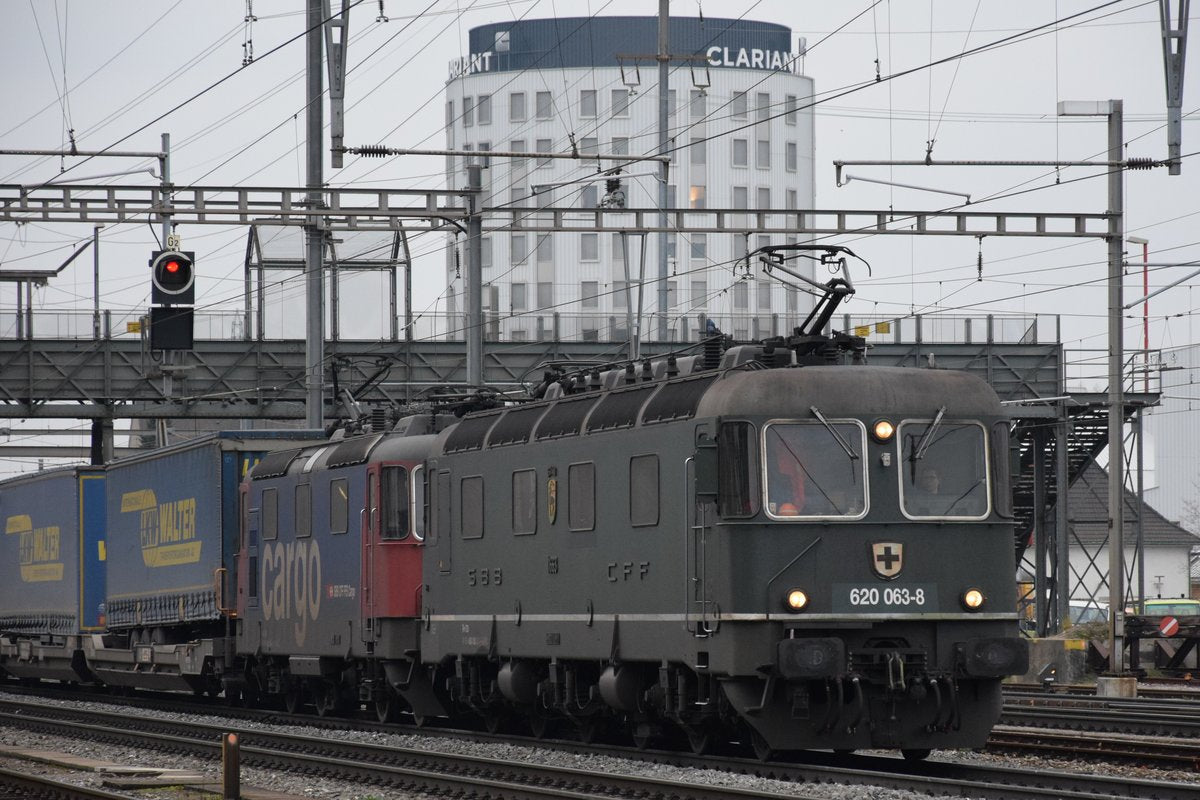Marklin 37328 - Class Re 620 Electric Locomotive
Prototype: Swiss Federal Railways (SBB) class Re 6/6 as the class Re 620 heavy electric locomotive, used for the SBB Cargo freight service area. Version in a fir green basic paint scheme. Round headlights, UIC plugs, diagonal grab irons on the ends, a maintenance hatch on one side for air conditioning. Locomotive road number 620 063-8, with the locomotive coat-of-arms for "Eglisau". The locomotive looks as it did around 2013 to 2018.
Highlights
- Centrally mounted motor and 4 axles in the outer trucks powered by means of cardan shafts.
- Frame and body constructed of heavy metal.
- World of Operation mfx+ digital decoder and a variety of light and sound functions included.
- Cab lighting and engine room lighting can be controlled in digital operation.
Product description
Model: The Marklin 37328 - Class Re 620 Electric Locomotive has an mfx+ digital decoder and extensive sound functions. It also has controlled high-efficiency propulsion with a flywheel, centrally mounted. 4 axles powered (both axles in each of the outer trucks) by means of cardan shafts. Traction tires. The triple headlights and 1 white marker light (Swiss headlight / marker light code) change over with the direction of travel, will work in conventional operation, and can be controlled digitally. The headlights at Locomotive Ends 2 and 1 can be turned off separately in digital operation. When the headlights are off at both ends, the double "A" lights are on at both ends. The lighting can be switched to 2 red marker lights. Cab lighting and engine room lighting can be controlled separately in digital operation. Maintenance-free warm white and red LEDs are used for the lighting. The locomotive has separately applied metal entry grab irons. The couplers can be replaced by detailed end skirting.
The minimum radius for operation is 360 mm / 14-3/16".
Length over the buffers 22.2 cm / 8-3/4".
Charlie's Tips
This model can be found at Ajckids in a DC version in the Trix H0 assortment under item number Trix 22773.
Great picture of the real locomotive at work used with permission from the photographer Martin Gobeli
Publications
- Fall New Items 2023Prototype information
It was and still is something special – the Swiss Federal Railways (SBB) Re 6/6. For a long time, it was even viewed as the most powerful electric locomotive in the world and still has this rating in Switzerland. Naturally, such a high performance as 8,020 kilowatts / 10,755 horsepower could only be applied to six axles, hence the rather unusual wheel arrangement of B-B-B for central European circumstances in order to combine the resultant tractive effort with good running characteristics on curves. The center truck had to have appropriate side play and the three trucks are connected to one another by means of elastic cross couplings. Based on these specifications, the SBB ordered four different prototypes in 1969 from SLM (mechanical parts) and from BBC (electrical parts). These four units were placed into service by the fall of 1972 and were then exhaustively tested. After a final version began to emerge, the SBB ordered 45 production units of the Re 6/6 from SLM/BBC as early as February 23, 1973. Delivery of them began in 1975, was carried out within two years, and was completed by 1977. Delivery of the second series of 40 Re 6/6 locomotives (road numbers 11650 - 11689) took place immediately thereafter from the end of 1977 to the end of 1980.
From then on heavy EC, IC, and express trains as well as the heaviest freight trains with up to 1,600 metric tons were the domain of the Re 6/6 locomotives on the Gotthard and Simplon lines. This did not change until the turn of the century when all of the Re 6/6 units were assigned by 2003 to the new freight service group SBB Cargo.
It is still impressive today, when an Re 6/6 fights its way up the ramps of the Gotthard with a long freight train. Even more impressive is the so-called "Re 10/10", the double-heading of an Re 4/4II and an Re 6/6, which has become an everyday sight at least on the Gotthard line. The productivity of this combination is only limited by the maximum load on the couplers of 1,400 metric tons on a 2.6% grade. Otherwise, the two locomotives could haul another several hundred tons over the mountain. Many locomotive engineers swear by the ten powered axles and the decent weight. They always prefer it to the nominally similar output of B-B m.u. combinations of the newest design.
Features
Warning
| CONTROL UNIT | MOBILE STATION | MOBILE STATION 2 | CENTRAL STATION 1/2 | CENTRAL STATION 3/2 | |
|---|---|---|---|---|---|
| Headlight(s) | X | X | X | X | X |
| Light Function1 | X | X | X | X | X |
| Electric locomotive op. sounds | X | X | X | X | X |
| Locomotive whistle | X | X | X | X | X |
| Engine room lighting | X | X | X | X | X |
| Engineer’s cab lighting | X | X | X | X | |
| Headlight(s): Cab2 End | X | X | X | X | |
| Engineer’s cab lighting | X | X | X | X | |
| Headlight(s): Cab1 End | X | X | X | X | |
| Direct control | X | X | X | ||
| Sound of squealing brakes off | X | X | X | ||
| Whistle for switching maneuver | X | X | X | ||
| Pantograph Sounds | X | X | X | ||
| Blower motors | X | X | X | ||
| Compressor | X | X | X | ||
| Letting off Air | X | X | X | ||
| Main Relay | X | ||||
| Stat. Announce. - Swiss | X | ||||
| Conductor's Whistle | X | ||||
| Sanding | X | ||||
| Replenishing sand | X | ||||
| Sound of Couplers Engaging | X | ||||
| Switching maneuver | X |
The country town of Eglisau lies nestled between a vineyard slope and the Rhine. The former castle district on the other side of the river affords glorious views of the old town.
Eglisau was founded in the 13th century on the banks of the Rhine, the waters of which have shaped the landscape for millennia. Ideally situated on the right bank of the river, the town became a hub for navigation on the Rhine. Today, the medieval town comprises three main rows of houses. Two parallel alleyways set at different levels create the structure of the square. Beyond this, vineyards extend out from the old buildings.
On the south-eastern edge of the town, right by the river, lies the mighty church, a dominant feature of the town’s impressive skyline. To the east and west of the old town along the Rhine are suburbs with some striking timber-framed houses. The old wooden bridge over the Rhine was dismantled at the start of the 20th century. Today, a wide stone bridge a little further upriver leads across to the former castle district on the other bank. Where the castle, customs house and other buildings once stood, packed in tightly by the river, today just the castle barn and Lochmühle mill remain. These are set in a landscaped area with ponds and ornamental gardens. From here, visitors can admire magnificent views of the old town and its imposing church.
EAN/UPC: 4001883373287

